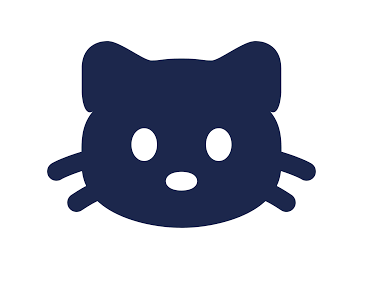How much cat food per day? A Complete Guide
Feeding your cat the right amount of food is key to maintaining its health, happiness, and longevity. Cats, as obligate carnivores, have specific dietary requirements that vary depending on their age, weight, activity level, and health condition. Feeding too much or too little can lead to health problems, so it’s essential to strike the right balance. How much cat food per day?
Understanding a Cat’s Dietary Needs
1. Factors Influencing Food Requirements
- Age:
Kittens require more calories per pound of body weight for growth, while adult and senior cats have lower caloric needs. - Activity Level:
Active outdoor cats burn more calories and require more food than sedentary indoor cats. - Weight and Body Condition:
Overweight cats need fewer calories to encourage weight loss, whereas underweight cats may require more to reach a healthy size. - Life Stage:
Pregnant or nursing cats need extra nutrition to support themselves and their kittens. - Health Status:
Cats with certain health conditions, such as diabetes or kidney disease, may require special diets.
General Guidelines for Feeding Cats
Dry Food vs. Wet Food
- Dry Food:
Contains about 300–400 kcal per cup. Cats eating dry food often require smaller portions. - Wet Food:
Contains around 70–100 kcal per 85-gram can. Wet food is ideal for hydration since it has high moisture content.
Portion Sizes by Weight
Here’s a general guideline for adult cats based on body weight:
| Cat Weight (lbs) | Dry Food (cups/day) | Wet Food (cans/day) |
|---|---|---|
| 5 lbs | 1/4–1/3 | 1 |
| 10 lbs | 1/3–1/2 | 2 |
| 15 lbs | 1/2–3/4 | 3 |
Calculating How Much Food Your Cat Needs
To calculate your cat’s caloric needs, use the Resting Energy Requirement (RER) formula:
RER = 70 × (weight in kg)^0.75
- Convert your cat’s weight to kilograms.
Example: A 10-lb cat weighs about 4.5 kg. - Apply the RER formula.
RER = 70 × (4.5)^0.75 ≈ 220 kcal/day. - Adjust for Activity Level:
Multiply RER by the appropriate factor:- Sedentary cats: RER × 1.2
- Active cats: RER × 1.4
- Kittens: RER × 2.0–2.5
For a sedentary 10-lb cat:
220 × 1.2 = 264 kcal/day.
Practical Feeding Tips
- Measure Portions:
Use a measuring cup or kitchen scale to avoid overfeeding. - Stick to a Schedule:
Feed your cat at the same times daily. Most adult cats do well with two meals per day. - Monitor Your Cat’s Weight:
Regularly weigh your cat and adjust portions if needed. - Avoid Free Feeding:
Leaving food out all day can lead to overeating and obesity.
Common Feeding Mistakes to Avoid
- Overfeeding:
It’s easy to overestimate portions, especially with dry food. - Skipping Nutritional Labels:
Always check the caloric content of your cat’s food. - Too Many Treats:
Treats should account for no more than 10% of your cat’s daily caloric intake. - Inadequate Hydration:
Cats eating mostly dry food should always have access to fresh water.
Conclusion
Feeding your cat the right amount of food is vital for their health and well-being. By understanding their caloric needs and using portion control, you can ensure your feline friend stays in tip-top shape. Always consult your veterinarian for personalized advice, especially if your cat has specific health concerns or dietary needs.
Customers also view this
- How much food does a cat need calculator?
- Cat food price in BD
- Smart Heart Cat Food Chicken and Tuna Bangladesh
- Smart Heart Cat Food price in Bangladesh
- Kaniva Cat Food price in Bangladesh
- Cat Food Shop near me Bangladesh
